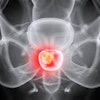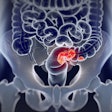After local anesthetic was injected into the fat pad deep in the Achilles tendon, one athlete performed her personal best in her event, which was also the best-ever Olympic result for her country in track and field competition. Often the patient's clinical outcome was delivered to healthcare providers directly via television.
One very accomplished runner presented for ultrasound after we had watched her pull up during a hurdle event with a buttock injury. Meticulous examination of the region demonstrated two problems, and careful palpation localized the pain to the scarotuberous ligament. Local anesthetic was injected into the region under ultrasound guidance. That evening she competed again, and we watched her win a silver medal in another event. We were satisfied that our exam was not only a success, but incredibly worthwhile.
Not all were success stories, however. We scanned one young weightlifter who had dislocated his elbow while attempting to lift for a medal position, rupturing the common flexor tendon. Unfortunately, he will never again be fit to compete at this level in the sport.
Simmons noted that it’s not always the size of the injury that determines its consequences for the athlete. He had scanned a heavyweight boxer complaining of a sore right hand, a distressing injury considering his sport. Ultrasound demonstrated a small tear in the extensor tendon hood at the base of the third finger. This small injury caused the tendon to dislocate when he made a fist, so he was landing punches with a bare knuckle, and much pain.
Simmons said that several principals are key to successful musculoskeletal ultrasound. A sound knowledge of basic anatomy is essential, along with comparative imaging of the contralateral "normal" side. Scanning with a light touch is also required -- without compressing the area of interest. One must "float like a butterfly" to avoid inadvertently displacing fluid, according to Simmons. When fluid is suspected, firm transducer compression will move the fluid and confirm this finding.
Using two hands for scanning is also very useful, and is usually a two-person job. The second person measures and annotates images, while the first performs the imaging, thus enabling the person scanning to remain over the area of interest.
Dynamic imaging that stretches and relaxes tendons and muscles is important for assessing pathology, and also moves adjacent structures thus allowing identification. "When in doubt, move it," Simmons advised.
Color Doppler is useful for identifying blood vessels, as structures of interest often run with vessels. Active inflammation with accompanying hyperemia also can be demonstrated with color Doppler imaging.
In times past, the incentive for producing a medal-winning swim might have been simply the honor of representing one's country. These days, the dangling carrot is more complex, but fundamentally career-driven. For example, Wijan Ponlid, a Thai boxer who won his country’s second-ever Olympic gold medal, was feted with a hero’s welcome upon return to his homeland. He's been promised 30 million Baht ($694,000 U.S.) for his efforts and a banquet in his honor complete with a procession of elephants, a celebration usually reserved for the king.
Most Olympic athletes are fulfilling dreams that began during childhood, when they watched their heroes achieve the seemingly impossible. The health management system at this year's Olympics played an important role in helping these young people reach their goals. It was a most satisfying experience.
By Leanne McNoulty
AuntMinnie.com contributing writer
November 8, 2000
1 2
Let AuntMinnie.com know what you think about this story.
Copyright © 2000 AuntMinnie.com















